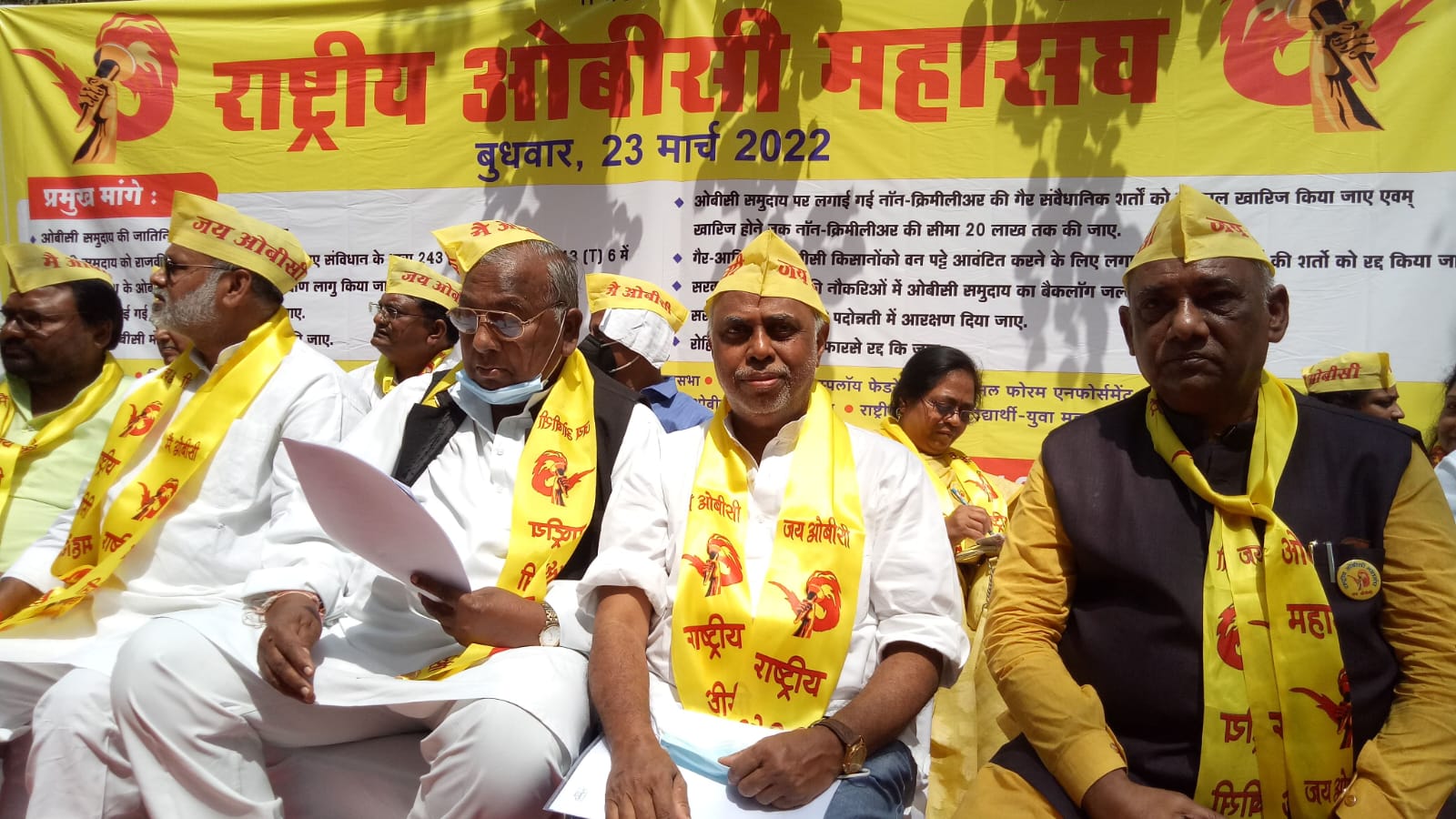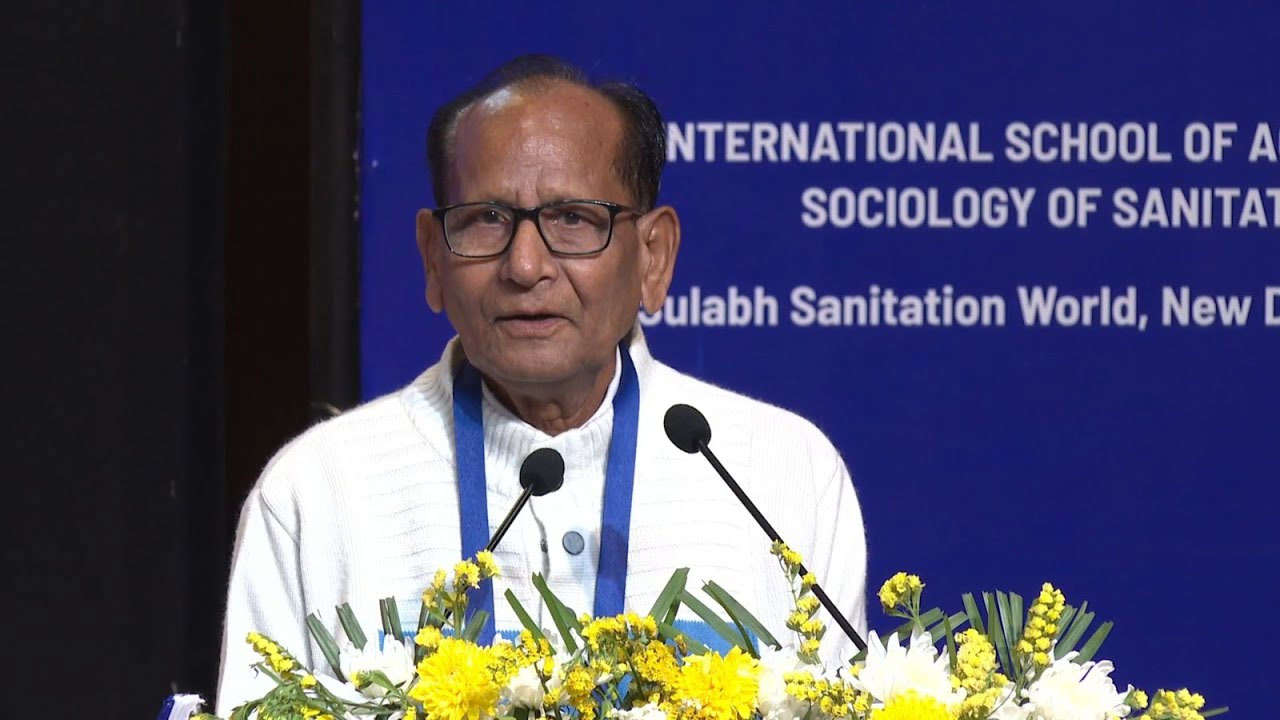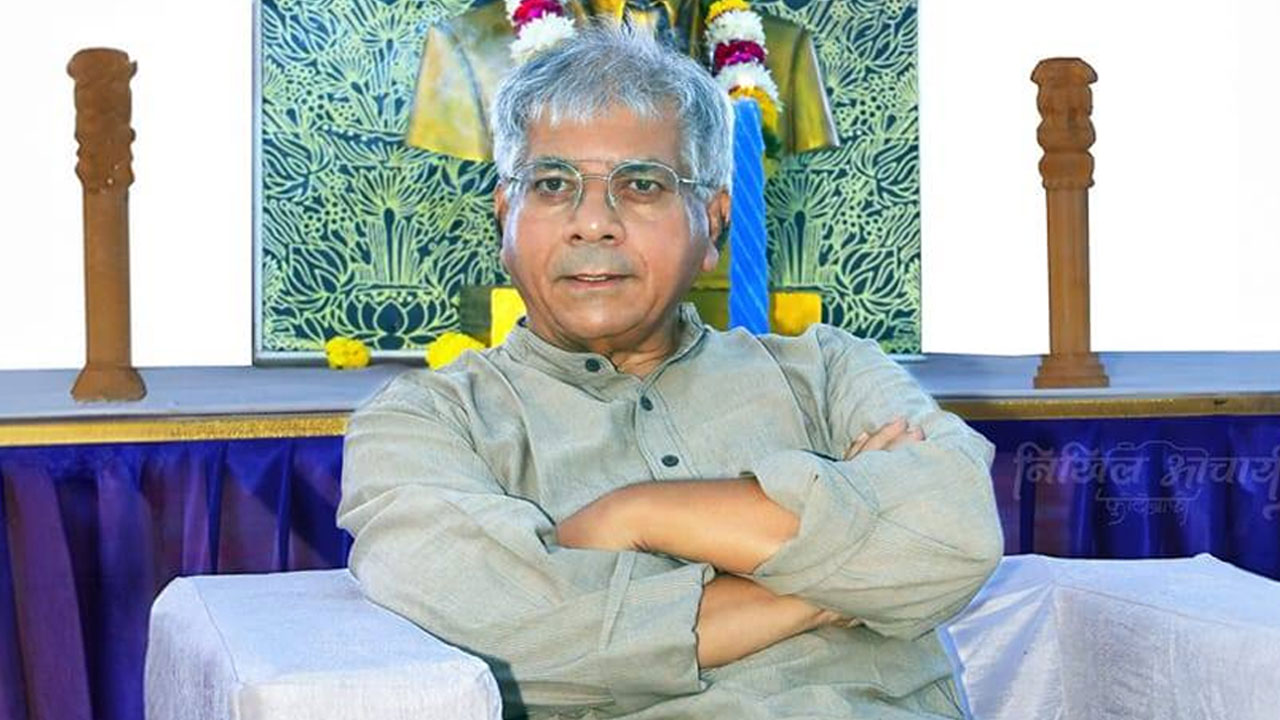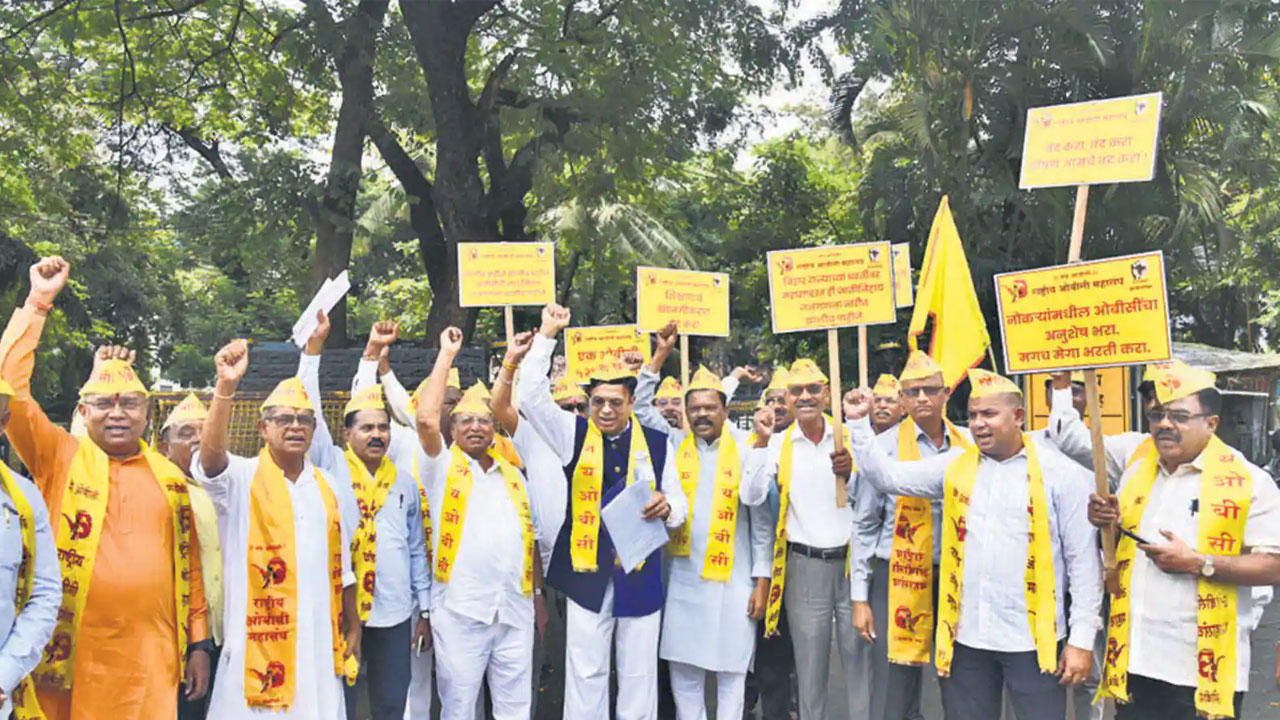The Supreme Court’s recent comments and recommendations with regard to subcategorization of the Scheduled Castes and Scheduled Tribes for the purposes of fixing their reservation quotas have come as a strong gust of wind that has forced open the doors and windows of my home and sent pages of the calendar fluttering, drawing me back into the past. The judgment has also made me doubt whether this is a step in the direction of making the deprived voiceless.
I remember an incident involving Jitan Ram Manjhi, a Union Cabinet minister today and a former Bihar chief minister. At the time he had just taken over as chief minister. He was on a tour of north Bihar and his convoy was moving on the national highway joining Muzaffarpur with Patna. I was on a bus, travelling from Muzaffarpur to Patna. Suddenly, the bus slowed down and came to a halt by the side of the road near Sarai-Bhagwanpur. The bus cleaner (conductor) was seated beside me on the seat closest to the door. He got down. I saw some police vehicles moving ahead on the highway. Just then the cleaner returned.
One passenger asked, “What’s the matter? Why has the bus been stopped?”
“The Musahar chief minister is coming…!”, the cleaner replied loudly so that everyone could hear him.
Some guffawed at his comment, others just smiled. I was shocked. I could not believe my ears. No one admonished him for his impudent comment. On the contrary, they were enjoying it.
The chief minister’s convoy whizzed past and our bus began crawling. The cleaner again sprawled on the seat beside me. I thought of asking him which caste he belonged to, whether he knew the caste of other passengers and of the person sitting beside him. But I kept quiet. “Where does this arrogance come from?” I wondered. “How can a person who is somehow plodding through life make abusive comments about a caste without any hesitation or fear? How can he simply not care what others would think?”
This incident is proof that caste is a socio-cultural phenomenon that has nothing to do with your economic status. Even a bus cleaner from supposedly the highest caste can publicly abuse a chief minister from a so-called low caste.
I remembered this incident when Jitan Ram Manjhi welcomed the recent Supreme Court judgment. Manjhi did not hear the bus cleaner’s comment but he clearly heard what Nitish Kumar said about him in the Bihar Assembly. “He knows nothing. He became the chief minister because of my stupidity,” Nitish had said. If this is not an invective, what is? Manjhi’s caste was being linked with his capabilities and Manjhi could see the abuser and clearly hear what he was saying.
Caste of offspring of inter-caste couples
In 2012, a Supreme Court bench of Justices Aftab Alam and Ranjana Prakash Desai gave an important ruling on reservations for children born of inter-caste marital unions. The bench said that the caste of the offspring of a SC/ST-upper-caste couple should be determined on the basis of the circumstances and conditions of their upbringing. The caste of the Savarna father cannot be the sole determinant of the caste of the offspring.

In its earlier judgments, the Supreme Court had repeatedly declared that the offspring of an SC/ST mother and Savarna father would be treated as a Savarna and would not be entitled to the benefits extended to SC/STs as deprived communities.
Accepting the petition filed by Rameshbhai Dabhai Naika, the bench of Justices Alam and Desai gave a new ruling. The top court quashed a Gujarat High Court judgment that had nullified the ST certificate of Naika.
The Supreme Court bench sent the case back to the scrutiny committee for a fresh look. The committee had revoked Naika’s ST certificate on the basis that his father was a Kshatriya. The decision had led to the allotment of a fair price shop to him by virtue of his belonging to a Scheduled Tribe being cancelled. The High Court had upheld the scrutiny committee’s decision. The Supreme Court, however, said that “in an inter-caste marriage or a marriage between a tribal and a non-tribal, the determination of the caste of the offspring is essentially a question of fact to be decided on the basis of the facts adduced in each case.”
Justices Alam and Desai said that in determining the caste of a person born of such a marriage, the conditions and circumstances of her upbringing cannot be disregarded. In inter-caste marriages there may be a presumption that the child belongs to the caste of the father. This presumption may be stronger in the case where the father belongs to an upper caste. But the presumption is not final and unalterable. The person born of such a marriage will have the right to produce evidence that no advantage accrued to him in his life owing to his father being a Savarna while on the contrary, he had to suffer handicaps associated with the ST communities and he was always seen as belonging to his mother’s community.
The court said that the petitioner was deprived of his ST certificate without examining the evidence he produced and that was improper. Rameshbhai’s contention was that he was brought up in his mother’s Naika community, which is an ST in Gujarat, and that he had married into the same community, hence, he should be considered an ST.
This case again shows that caste is a socio-cultural identity. An upper-caste father makes no difference if the mother is an Adivasi or a Dalit.
When presidents face discrimination
The Rashtriya Swayamsevak Sangh (RSS) and the Bharatiya Janata Party (BJP) claim with great pride that during their regime, a Dalit and an Adivasi were picked for the country’s highest office. On 18 March 2018, President Ramnath Kovind, along with wife, visited the Jagannath Temple in Puri, Odisha. It was reported that when he was walking towards the sanctum sanctorum, some “sevadars” tried to block his way while others pushed his wife.
The issue came to the fore when English daily The Times of India somehow got hold of the proceedings of the meeting of the management of Shree Jagannath Temple, Puri. The newspaper carried the story on 26 June the same year, but it did not cause any furore in the mainstream media, nor did it trigger any debate. The Rashtrapati Bhavan had sent a letter to the district collector of Puri, on the basis of which an enquiry was initiated.
But that was not all. When Ramnath Kovind and his wife visited the Brahma Temple in Pushkar, Rajasthan, on 15 May 2018, they had to perform puja on the stairs of the temple. When a controversy erupted, it was clarified that his wife had knee pain and could not go up to the sanctum sanctorum.
Neither the RSS nor the BJP issued any statement against the humiliation of the President and the opposition did not make it an issue.
Kovind’s successor President Droupadi Murmu visited the Jagannath Temple at Hauz Khas in Delhi on 20 June 2023. A photograph of the visit that went viral showed the President standing outside the sanctum sanctorum with folded hands. When it kicked up a row in social media, the temple issued an explanation saying, “There is a protocol for performance of Puja. Only those who are invited as Maharaj by us are allowed to perform the puja inside the sanctum sanctorum. The President hadn’t been invited; she had come on her own.” When progressive sections of society criticized this sophistry, Hindutvavadis trained their guns on them.
The first citizens – the presidents – of the Indian Republic were not given the honour due to them when the then president Kovind was kept away from the foundation-laying ceremony and the present president Murmu from the inauguration of the new Parliament building. On both the occasions, brahmin priests were present in large numbers and the Prime Minister played the yajman (host) as if it was the groundbreaking and inauguration ceremonies not of the Parliament building but his house. Sengol, a symbol of medieval authoritarianism, was installed in the building that houses Parliament – the highest institution of modern democracy.
Caste arrogance
Recently, former minister Anurag Thakur, speaking in this most venerated institution of democracy, remarked with unconcealed arrogance that “the one whose caste is not known is talking about caste census.” His insulting comment was brimming with hatred. Yet the Prime Minister was so impressed that he shared the video of Thakur’s speech on his X handle and praised it. What Thakur said was a casteist slur, questioning the parentage of the leader of opposition Rahul Gandhi.
The SCs and STs were given reservations in India as they were subjected to inhuman discrimination and suffered the scourge of untouchability for centuries. Reservation was seen as a tool for giving them their due share and ensuring their participation in nation-building. Reservation is not a poverty-alleviation programme. It is a painkiller and not the cure for the disease that is causing the pain.
Not for combating poverty
In his final address to the Constituent Assembly, Dr B.R. Ambedkar put forth elimination of socio-economic inequality as the national agenda for India. He wanted the Constitutional bodies to open up opportunities for the deprived and make them partners in the Indian Republic. He considered this very important for forging national unity. That is why, the chapter on Fundamental Rights in the Constitution, while accepting the principle of equality of opportunity, contains special provisions for those who are left out. Reservations are rooted in that provision. Reservations cannot and will not provide government jobs to each of the tens of millions of members of the deprived sections in India.
Reservation is meant to give the deprived sections a sense they have a share in the opportunities available in the nation and a part in its running. That is the reason the Constitution also accords a special status to the minorities and women.
Why is reservation – that is just an analgesic – being treated as a cure for the disease? And what is the disease? The disease is that a major chunk of the SCs and STs has been and is deprived of education. The disease is their lifelong struggle against poverty and misery. An honourable judge said that those who manage to enter the crowded coach of a train don’t want to allow others in. But what he said has nothing to do with the ground reality. Obviously, such a person cannot diagnose the disease.
Understanding creamy layer
One honourable judge advocated application of the creamy-layer principle to reservations for SC, STs and three other honourable judges supported him. The judge who advocated creamy layer comes from a Scheduled Caste. When serving Presidents and chief ministers from SC-ST communities – who undoubtedly are the crème de la crème of their communities – are not given the respect they deserve, the fate of other “creamy” members is beyond doubt.
What will be the fallout if the reservation quota is subdivided by subcategorizing the SCs and the STs and if the creamy layer principle is applied to them? Before answering this question, it needs to be clarified that the Supreme Court’s comments and recommendations are not binding. The court has only given the State the right to subcategorize the SCs and STs. This right has been given to the State not through a Constitutional amendment but through a court order and it is something that Article 341 of the Constitution does not allow.
If the subcategorization happens, it will gradually erode the principle that SCs and STs are homogenous groups. It will also erode reservations. Fissures will develop in the unity of the SCs and the STs and their voice will weaken. But one question still remains unanswered. Why should we not think about the castes within the SCs and the STs have been pushed to even their margins due to historical reasons?
Be that as it may, the court’s comments and recommendations are in consonance with the RSS ideology. The RSS is against caste-based reservations. In 2017, Manmohan Vaidya, the then prachar pramukh of the RSS, had said that reservations went against the principle of equality. Give the deprived people opportunities, not reservations, he argued. Clearly, what Vaidya meant was that while means of livelihood can be arranged for the Adivasis, the Dalits and the OBCs, they should not be given a place in the power structure. What Vaidya said represents the views of the RSS, which is rabidly anti-reservation. The RSS wants to re-establish Brahmanism and the hegemony of the savarnas. This danger should not be lost sight of. Reservation is a tool for giving the deprived classes their due share and representation. It is meant to grant them a say in decision-making. Conspiracies to strangle this idea have been hatched for a long time.
(Translated from the original Hindi by Amrish Herdenia)
Forward Press also publishes books on Bahujan issues. Forward Press Books sheds light on the widespread problems as well as the finer aspects of Bahujan (Dalit, OBC, Adivasi, Nomadic, Pasmanda) society, culture, literature and politics. Contact us for a list of FP Books’ titles and to order. Mobile: +917827427311, Email: info@forwardmagazine.in)





